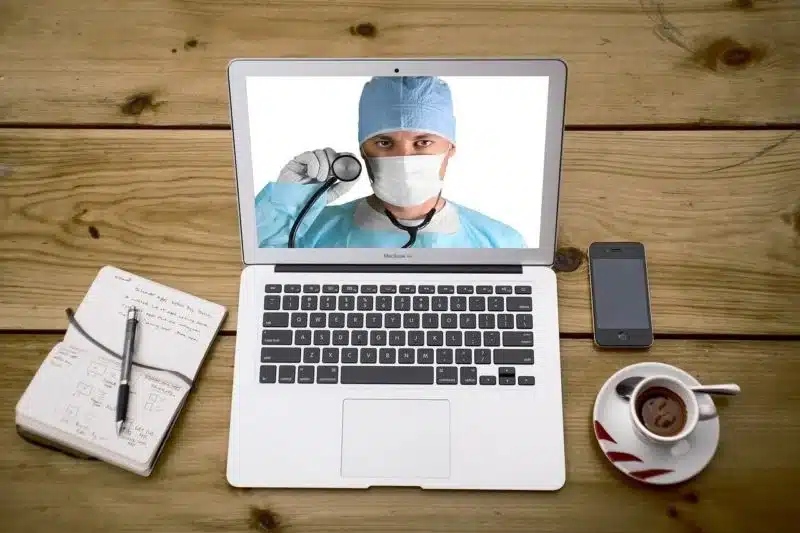The pandemic has been a watershed moment, giving a fillip to startups providing plug-and-play virtual healthcare solutions across Sri Lanka. But will the trend transcend beyond the current crisis to become a mainstay in the island country?
Shortly after the government announced a lockdown in March 2020 to curb the spread of COVID-19, the members of the Sri Lankan Association of Community Ophthalmologists (SLACO) launched a Facebook page. The dedicated social media space turned into a virtual consultation room. Patients reached out to the doctors, often with close-up images of their eyes. In some cases, the images were accompanied by short voice/video clips expressing the patients’ concerns.
More than a year later, it’s clear that the prompt response of the doctors in Sri Lanka during the pandemic has helped build patient confidence and authenticity in remote consultations, with a sharp focus on disruptive technologies, such as artificial intelligence and machine learning.
Sri Lankan startups, providing plug-and-play telemedicine solutions, have raised substantial investments from some of Silicon Valley’s top investors and strengthened their presence, in collaboration with government initiatives during the pandemic. 2020 has indeed been a watershed year for telemedicine in the South Asian country.
Startup saga
In February 2021, oDoc, a leading telemedicine service provider in Sri Lanka, raised $1 million in pre-series funding. Around the same time, Dhaka-based digital healthcare startup, Maya, announced that it has raised $2.2 million in seed funding and plans to strengthen its reach in Sri Lanka.
Although oDoc was founded in 2017 and Maya in 2011 (as an information-focused web platform for women), it was only last year that both companies managed to fully leverage their state-of-the-art technologies to connect patients virtually with doctors. Apart from offering video consultations, the startups also met the growing demand for home diagnostics and medicine delivery.
Maya’s transformation from a content-based web platform to an on-demand anonymous messaging service, where people can ask health questions to experts, and now into telehealth bears testament to the evolution of the digital health space. While reducing the burden on traditional healthcare systems, these new-age solution providers are also making the processes more efficient and equitable.
oDoc launched the Sri Lankan National Telemedicine Platform last year on behalf of the country’s health ministry as a corporate social responsibility project. The startup also collaborated with a mobile broadband service to bring 24/7 online consultation services directly to the mobile of every subscriber, ensuring that even patients in remote areas had access to quality healthcare from the comfort of their homes.
MyDoctor, a pioneering Colombo-based digital health solution provider, is another fine example of the paradigm shift that is taking place in telemedicine in Sri Lanka. The company partnered with the Ministry of Health and Indigenous Medical Services (MOH) to enable the Government’s eHealth system to offer free telemedicine services via the MyDoctor app.
The startup’s aim is to help digitise the Non-Communicable Disease (NCD) clinics in hospitals across the country to provide seamless telemedicine solutions. The emphasis is on facilitating equitable access and sustainable development of digital health interventions for Sri Lankans across the country.
Long way to go
An insightful study published in 2016 had explored the impact of culture, technology and infrastructure on the adoption of telemedicine in rural areas of Sri Lanka. While public health infrastructure and most other factors may still remain the same, the pandemic has nonetheless spurred a greater adoption of remote healthcare beyond the urban areas.
In an interview, Dr. Kumara Mendis, the Chair Professor of Family Medicine at University of Kelaniya, Sri Lanka and an Associate Professor in the School of Medicine at Western Sydney University, Australia, said, “In Sri Lanka, around 90% of the population have mobile phones. The younger generation are comfortable with using telemedicine and virtual health, with specific interest in services like having their medications arranged through calling and then having it delivered. For the care of the elderly, it helps that the younger members of the family are with them at home to help them with the technical processes during consultations.”
With enhanced internet access and electronic medical records (EMR) slowly becoming the norm, there’s an urgent need for embracing an agile system that is responsive to the dynamic workings of the public and private healthcare systems in Sri Lanka. Whether it’s digitising the health system or public private partnerships (PPPs) in healthcare, the government needs to lay down practical guidelines as well as strict data privacy and security laws. Only then can telemedicine offer long-term solutions and transcend beyond the current crisis to live up to its promise of easy access to quality healthcare for all.


















Add Comment